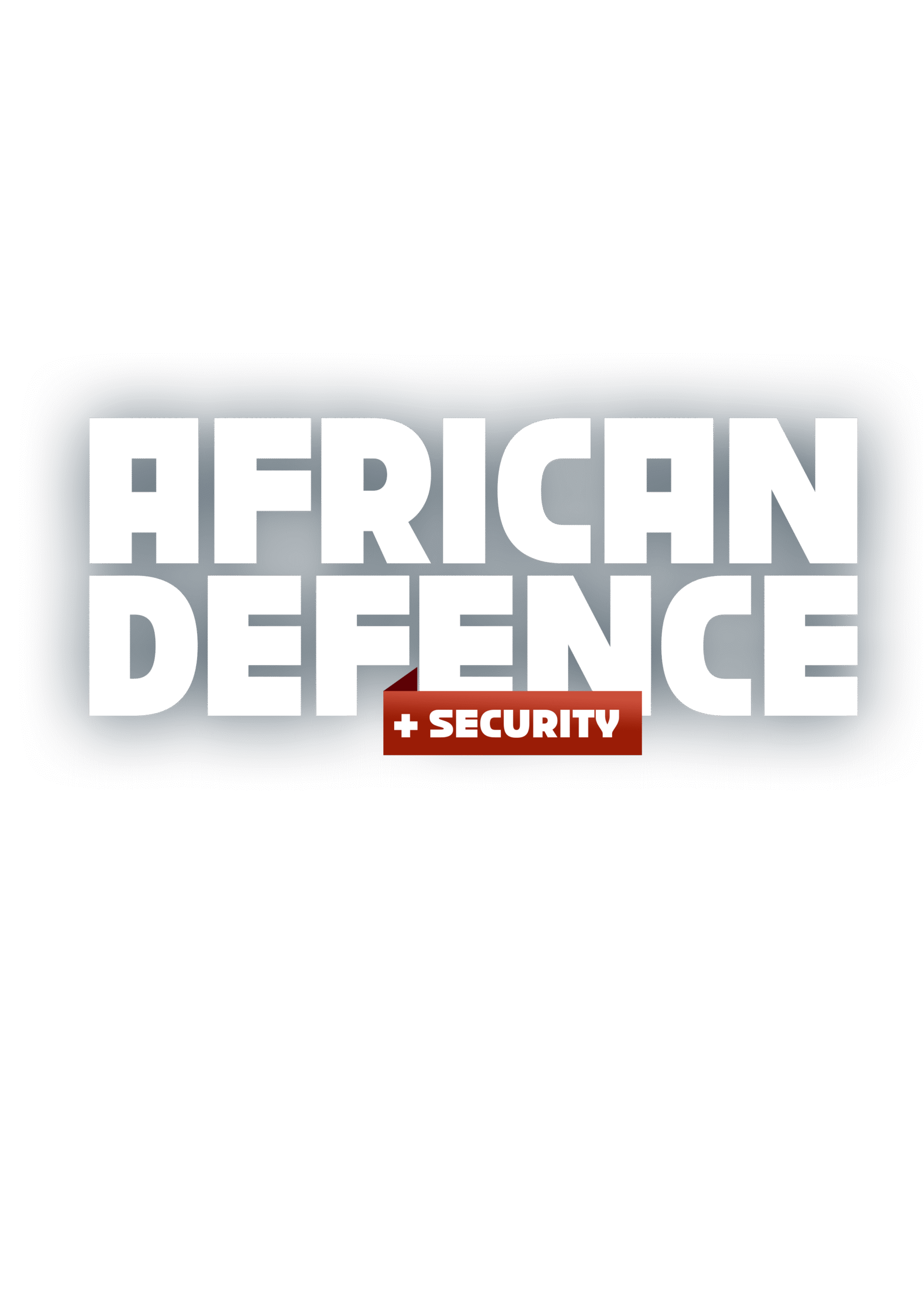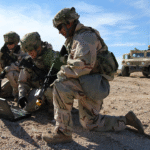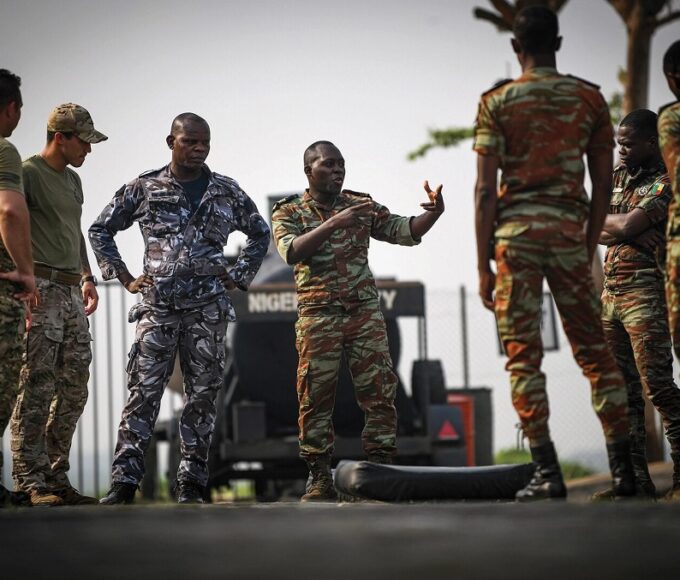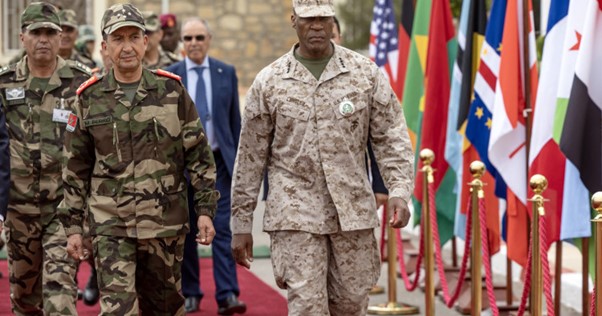The BRICS Military Influence: New Alignments, New Threats?
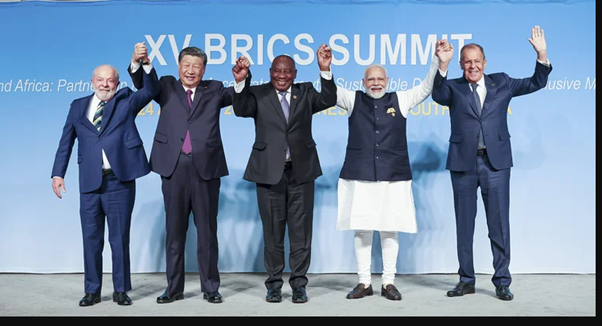
Once seen primarily as an economic bloc with aspirations of reshaping global finance, the BRICS grouping—comprising Brazil, Russia, India, China, and South Africa—has in recent years begun flexing military muscle and strategic influence. With its expansion in January 2024 to include Egypt, Ethiopia, Iran, Saudi Arabia, and the United Arab Emirates, BRICS now commands greater geographical depth, resource control, and geopolitical clout.
But as BRICS shifts from boardrooms to battlefields, a pressing question looms for Africa: Does the military dimension of this emerging power bloc offer new strategic opportunities—or new threats to continental stability and sovereignty?
This report interrogates the evolving military posture of BRICS, its impact on African defence and diplomacy, and the implications of new alignments for an increasingly polarised global order.
From Economic Club to Strategic Coalition
Established in 2009, BRICS was designed to challenge Western dominance in global financial governance. However, as geopolitical tensions rise globally—especially following Russia’s invasion of Ukraine and the escalating US-China rivalry—the bloc is rapidly transforming into a multipolar counterweight with security ambitions.
The 2023 Johannesburg BRICS Summit marked a turning point. Discussions shifted from trade and development to military cooperation, intelligence sharing, cyber-defence, arms trade, and joint security drills. Though BRICS lacks a formal mutual defence pact like NATO, informal military coordination is increasing—particularly among Russia, China, Iran, and now Saudi Arabia and Egypt.
Africa’s Deepening Ties with BRICS Defence Architecture
Africa is no longer a peripheral observer in BRICS affairs. With South Africa, Egypt, and Ethiopia now full BRICS members, the continent has a growing voice in shaping the bloc’s evolving defence framework.
- South Africa, a member since 2010, has already conducted multiple joint naval drills with Russia and China, including the controversial “Exercise Mosi II” off the coast of Durban in February 2023, which coincided with the one-year anniversary of Russia’s invasion of Ukraine—sparking Western criticism.
- Egypt, with its sizeable and modernising military, adds weight to BRICS defence capabilities. Egypt has joint arms projects with Russia and China and receives drone and surveillance tech from both countries. Cairo also maintains strong ties with India and Brazil in military training and peacekeeping exchanges.
- Ethiopia, a rising Horn of Africa power, is rebuilding its defence posture post-Tigray conflict, with interest in low-cost arms, cyber tools, and joint military academies—areas where BRICS partners have expressed readiness to collaborate.
These growing military linkages raise questions about strategic alignment, military interoperability, and intelligence-sharing between African BRICS members and their continental neighbours, many of whom are allied with NATO or Western defence partners.
Russia and China in BRICS Military Projection
Two BRICS giants—Russia and China—remain the principal drivers of the bloc’s defence influence:
- Russia, isolated from the West due to its actions in Ukraine, sees BRICS as a strategic lifeline. Moscow has intensified arms sales, military training, and private security deployments (via Wagner/“Africa Corps”) in African BRICS and non-BRICS states alike. SIPRI data shows Russia accounted for 40% of Africa’s arms imports between 2018 and 2022.
- China, the bloc’s economic engine, is also rapidly expanding its defence footprint. It operates its first overseas military base in Djibouti, funds police training centres in Zimbabwe, Zambia, and Namibia, and provides dual-use infrastructure (ports, roads, satellites) that could serve future military purposes.
Together, Beijing and Moscow are crafting an alternative global security architecture—one in which Africa is increasingly seen not just as a market, but as a partner.
Emerging Threats or Counterweight to NATO?
Supporters of a militarily stronger BRICS argue that it offers Africa strategic diversification in a world dominated by Western security paradigms. By deepening defence ties with non-NATO powers, African states can access arms and training with fewer conditions, more affordable costs, and greater geopolitical leverage.
But critics warn of unintended consequences:
- Security Dependence: Overreliance on Russian or Chinese security frameworks could compromise African sovereignty, especially in fragile or coup-prone states.
- Proxy Conflicts: As BRICS members increasingly assert themselves globally, Africa could become a battleground for great-power rivalry—mirroring Cold War dynamics.
- Arms Proliferation: The influx of unregulated weapons, surveillance systems, and private military contractors risks fuelling internal repression or regional instability.
In short, BRICS’ growing military posture presents a double-edged sword: a shield for some, a source of new vulnerabilities for others.
Defence Industrial Cooperation and Technology Transfer
Beyond arms sales, BRICS military influence is evident in its push for joint defence manufacturing and technology localisation. Initiatives include:
- India and South Africa’s cooperation on UAV and naval systems;
- Brazil’s defence tech exports to Angola and Mozambique, including light attack aircraft and communications gear;
- China’s military academies and infrastructure projects in East Africa, often bundled into Belt and Road Initiative (BRI) packages.
There is also renewed discussion within BRICS to establish a joint defence industry bank or innovation hub to coordinate arms production and cyber defence development—proposals that, if realised, could challenge existing Western military-industrial monopolies on the continent.
Diplomatic Balancing and the African Union’s Tightrope
The African Union (AU) and most African countries continue to walk a careful diplomatic tightrope. While the AU endorsed the Johannesburg II Summit’s call for a multipolar world, it remains cautious about deep entanglements in global military alliances.
Many African defence chiefs—especially those from Nigeria, Kenya, Ghana, and Morocco—have warned against excessive reliance on BRICS or any single bloc. Instead, they advocate for a non-aligned, interest-driven security policy that allows countries to engage with all partners while safeguarding sovereignty.
A Multipolar Future: What Lies Ahead?
The rise of BRICS as a security actor challenges long-held assumptions about Africa’s place in the global order. For decades, NATO and Western coalitions dominated Africa’s security space. Now, with BRICS defence diplomacy gaining ground, a new multipolar dynamic is emerging—one that demands sharper strategic thinking from African states.
Four critical trends to watch:
- Increased joint drills and interoperability exercises among BRICS militaries on African soil.
- Growing intelligence-sharing frameworks and cyber defence coordination.
- Expansion of defence loans and security-for-resources agreements (notably with Gulf-based BRICS entrants like Saudi Arabia and the UAE).
- Formation of parallel peacekeeping or conflict response missions, potentially undermining UN-led operations in Africa.
A New Chessboard, Same Rules?
The militarisation of BRICS marks a new chapter in Africa’s security calculus. As new alignments emerge, so do new threats—and opportunities. For African states, the challenge will not be choosing sides but crafting sovereign, strategic, and flexible policies that prioritise national interest, avoid dependency, and uphold continental security norms.
If Africa fails to navigate this terrain wisely, it risks becoming—once again—a pawn in the game of great-power rivalry. But with strategic foresight and unity of purpose, BRICS’ rise could serve not as a threat, but as a catalyst for African defence independence.
Key Figures at a Glance (2024):
- BRICS expanded to 11 members in January 2024, including Egypt, Ethiopia, Saudi Arabia, UAE, and Iran
- Russia accounts for 40% of African arms imports (SIPRI, 2018–2022)
- South Africa hosted Exercise Mosi II with China and Russia in 2023
- BRICS economies represent over 30% of global GDP and 42% of the world’s population
- Estimated $8.5 billion in BRICS arms trade to Africa between 2019–2023
To stay informed on emerging defence blocs and their implications for African sovereignty, subscribe to African Defence & Security Magazine—your window into the continent’s evolving strategic landscape.
Recent Posts
Categories
- Air & Aerospace16
- Border Security15
- Civil Security4
- Civil Wars4
- Crisis5
- Cyber Security8
- Defense18
- Diplomacy19
- Entrepreneurship1
- Events5
- Global Security Watch6
- Industry8
- Land & Army8
- Leadership & Training5
- Military Aviation4
- Military History27
- Military Speeches1
- More1
- Naval & Maritime9
- Resources2
- Security12
- Special Forces1
- Systems And Technology9
- Tech6
- Uncategorized3
- UNSC1
- Veterans6
- Women in Defence9
Related Articles
GLOBAL SECURITY WATCH – LESSONS FROM NATO FOR AFRICAN REGIONAL DEFENCE COOPERATION
Formed in 1949, the North Atlantic Treaty Organization (NATO) remains the world’s...
ByKing Richard Igimoh, Group Editor ALONovember 4, 2025The Red Sea Corridor: International Naval Presence and African Sovereignty
Few maritime spaces in the world today are as contested, congested, and...
Byadmag_adminJune 27, 2025Africa and NATO: Evolving Strategic Partnerships and Interests
In the aftermath of the Cold War, the global security architecture shifted...
Byadmag_adminJune 27, 2025Cyberwarfare in the Global South: Lessons for Africa from Abroad
In today’s digitised battlefield, firewalls are as critical as frontlines, and cyberweapons...
Byadmag_adminJune 26, 2025
